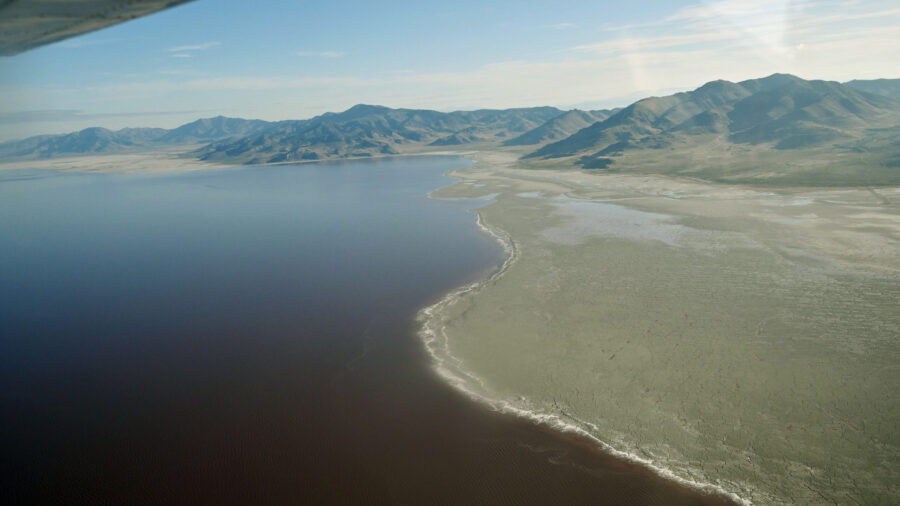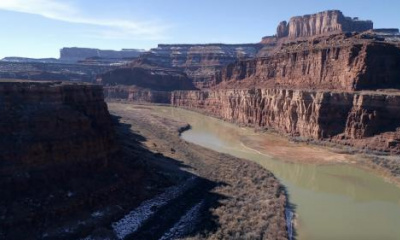SALT LAKE CITY — It’s safe to say the brutal start to this summer along the Wasatch Front has hit Great Salt Lake especially hard.
Deputy Great Salt Lake Commissioner Tim Davis said the lake normally loses 2 to 2.5 feet every summer from evaporation and upstream diversions. He said that happens from spring to as late as November.
However, this year, the south arm, which is also the main body, of Great Salt Lake has already fallen 2 feet, and there are still roughly three months to go before the lake will start filling again.
Davis told KSL NewsRadio he expects the lake to fall another half foot, matching its average yearly summer decrease of 2.5 feet. But, he also said there’s a chance the Great Salt Lake loses another foot, which would mark a three-foot loss since its spring peak.
If it were to drop another foot, that means the south arm would fall back to 4,192 feet, where it stood one year ago, before the lake took in another strong much-needed snowpack.
Changing water levels
This spring, Great Salt Lake peaked at 4,195 feet above sea level, which was its highest level since 2017. At the time of publication, the lake sat two feet lower, at 4,193 feet.
However, in the fall of 2023, the lake stood at 4,192 feet following a record-breaking winter and snowpack that helped save the lake’s ecosystem from the brink of collapse.
Great Salt Lake plummeted to a record low of 4,188.5 feet in November 2022 but rose about 5.5 feet from the record winter that followed.
However, during that span, the lake’s north arm, which is divided from the rest of the lake by a railroad causeway, didn’t rise much from the depths of 2022.
Davis explained state officials ordered the berm, which allows water to flow between the north and south arms, to be modified to bring as much water from the record 2023 spring runoff into the lake’s south arm since it is the home to the entire lake’s ecosystem.
So, while the south arm grew 5.5 feet, the north arm only rose about 1.3 feet, from 4,188.5 to just about 4,189.8 feet.
But, today, the north arm now sits at 4,191.6 feet, which is only about 1.4 feet lower than the south arm.
Davis explained water is now rushing between the north and south arm, which is helping the two come together and is a factor in why the south arm has dropped 2 feet since its spring peak.
But, ultimately, another huge factor in the lake level decreases since spring, was the brutally hot, dry July in northern Utah.
“The good rain last week maybe helped stabilize it a little bit. But the reality is July did take its toll,” Davis said.
The need to conserve
Despite the chances the south arm will fall back to where it was a year ago, Davis said it’s still a lot better than where it was when it hit its record low in 2022.
If the south arm does fall another foot, it would still be 3.5 feet higher than the record low.
However, Great Salt Lake is still far from its target healthy level of 4,198, a level it has not reached since the spring of 2012.
Davis said they are seeing a difference in the lake’s health, thanks in part to Utahns conserving water through two great winters in a row. But, there is still much work to do to get Great Salt Lake back to its healthy range.
“We can’t rely upon Mother Nature to get us enough water again. She bought us time but really it’s now on us to make sure that we are conserving, dedicating, delivering enough water to the lake.”








